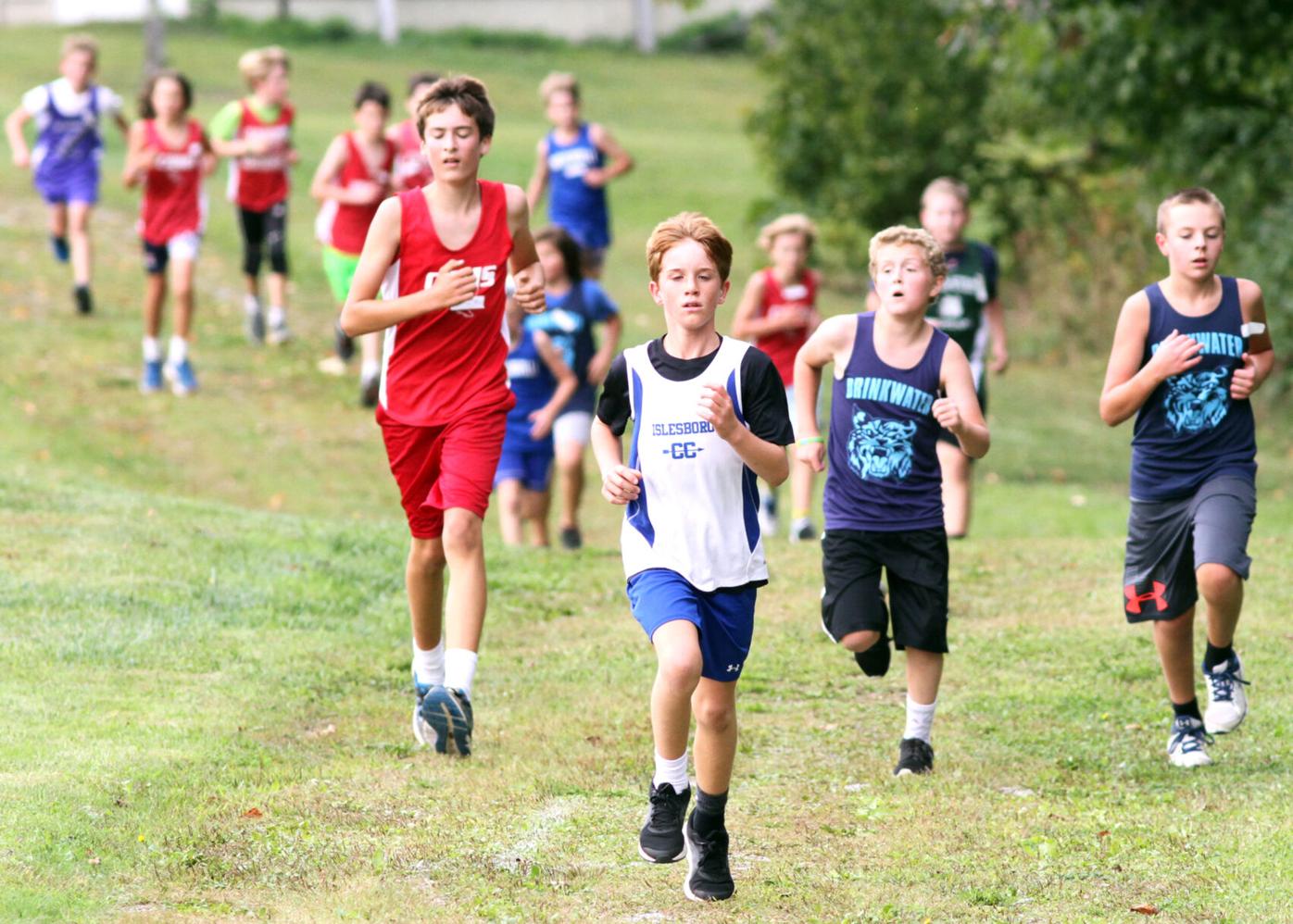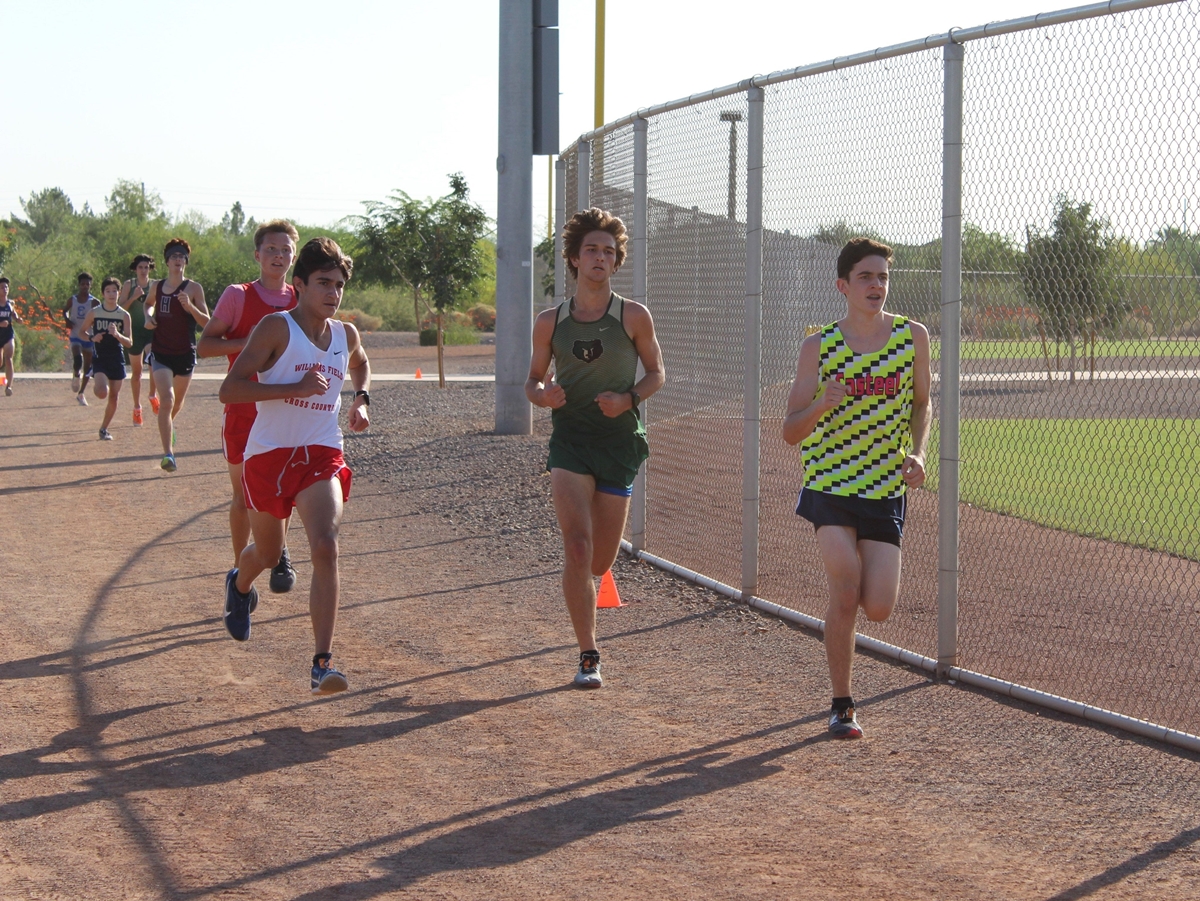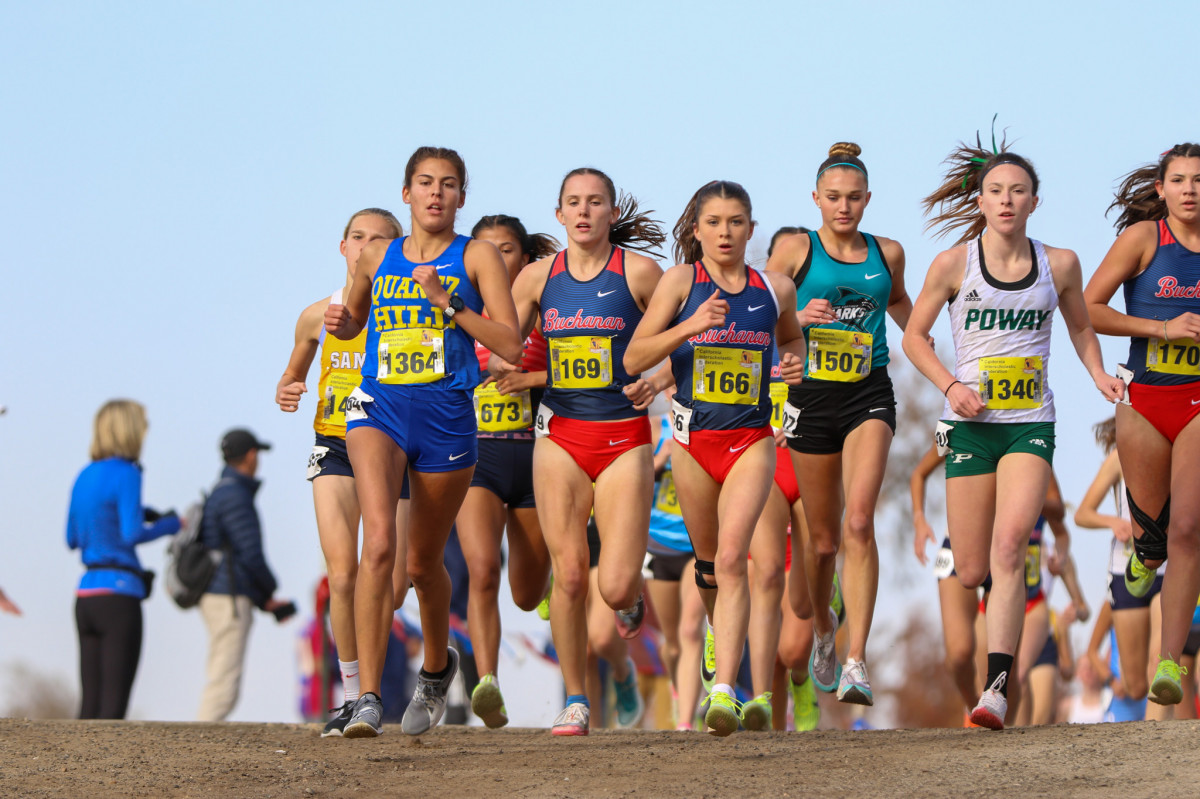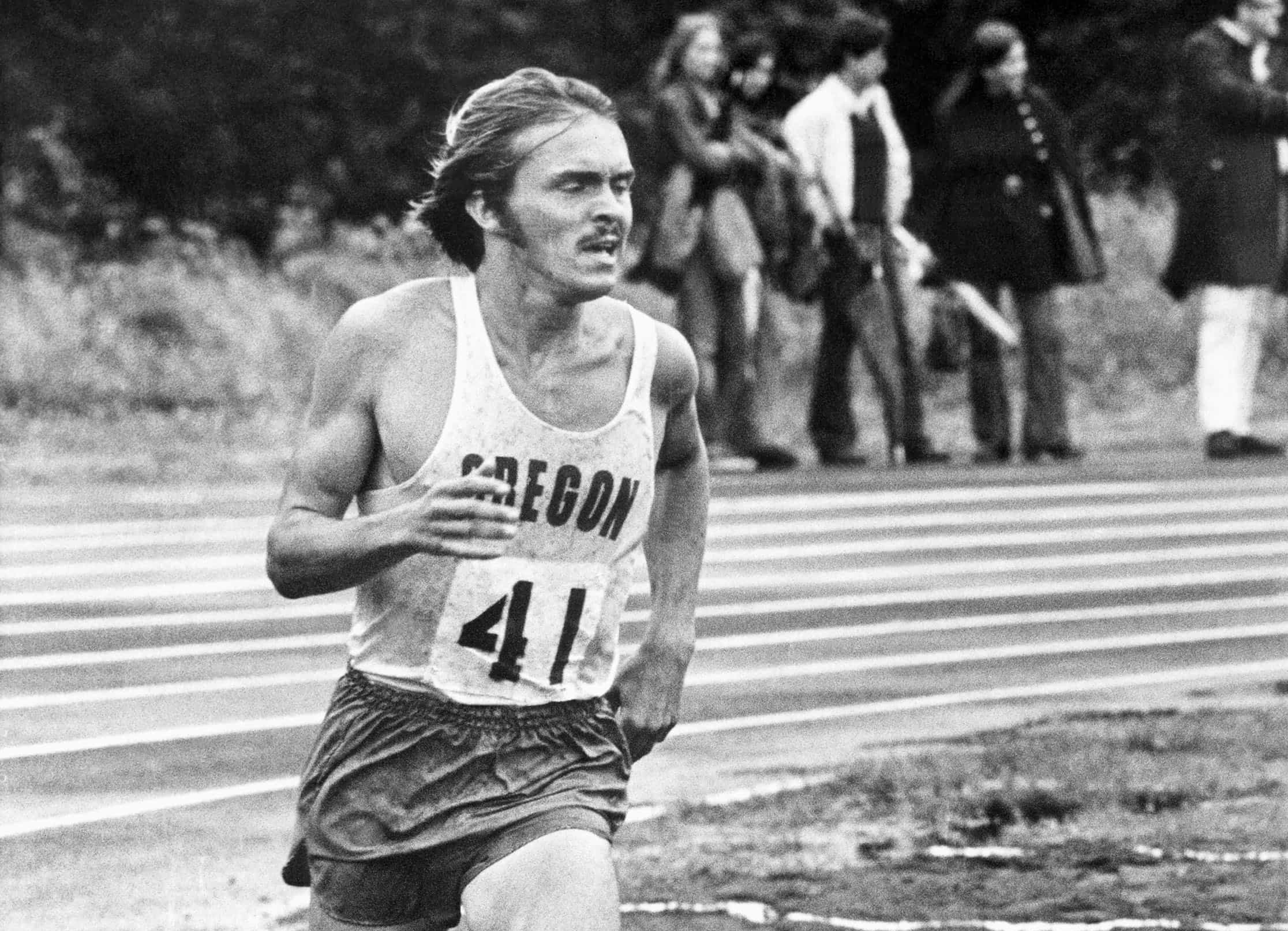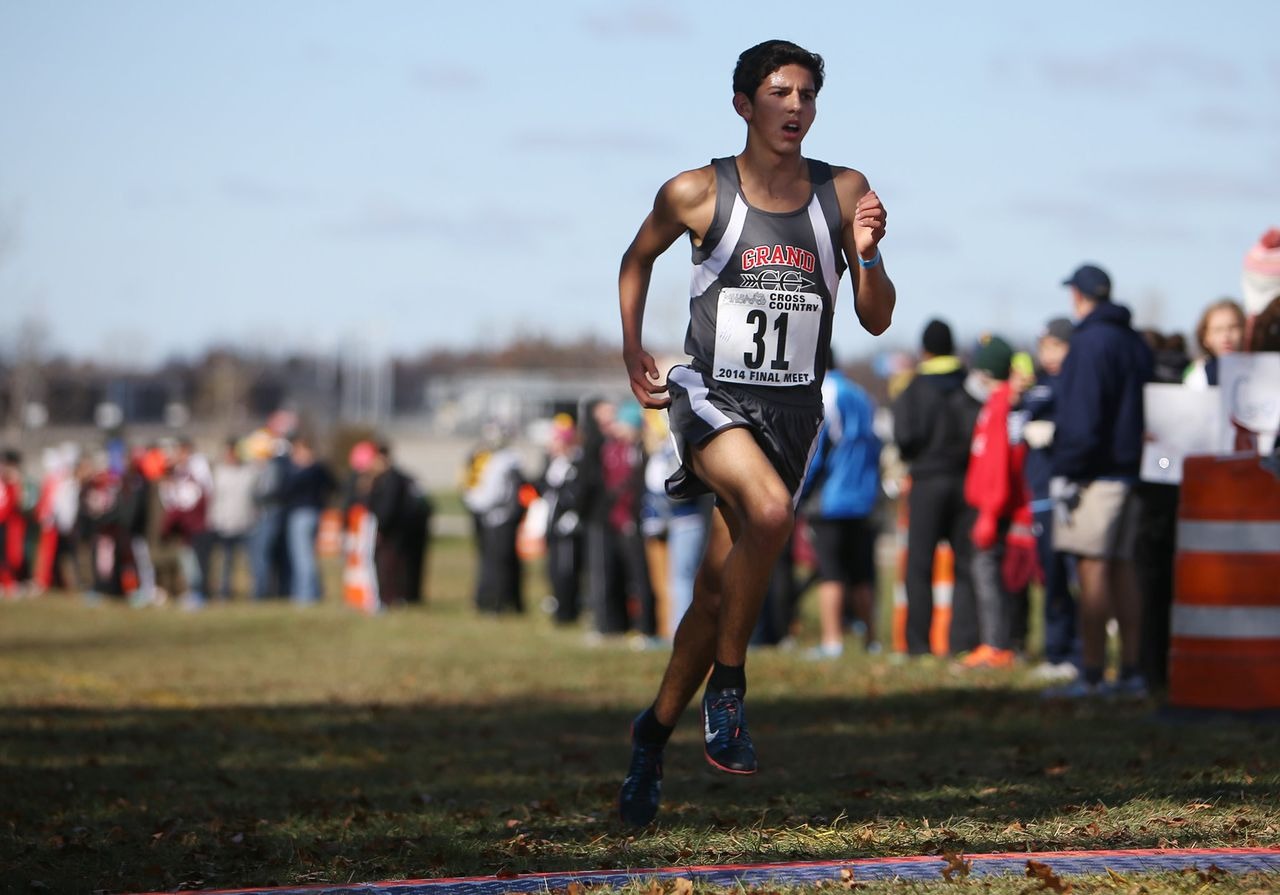

Featured
How To Be A Cross Country Coach
Modified: January 2, 2024
Learn how to become a cross country coach with our featured guide, packed with expert tips and essential strategies for success.
Introduction
Welcome to the world of cross country coaching! As a cross country coach, you have the exciting opportunity to guide and develop young athletes in one of the most challenging and rewarding sports. Cross country is an endurance-based discipline that not only requires physical strength but also mental toughness and strategic thinking. Your role as a coach is not just about training athletes to run fast, but also about instilling a love for the sport, fostering teamwork, and nurturing individual growth.
To be a successful cross country coach, you need a combination of qualifications, coaching philosophy, and effective techniques. This article will guide you through the fundamentals of cross country coaching, providing valuable insights and tips to help you excel in your role.
While there are no strict educational requirements to become a cross country coach, having a background in sports science or physical education can be advantageous. A solid understanding of the principles of exercise physiology, biomechanics, nutrition, and injury prevention will enable you to design effective training programs and ensure the well-being of your athletes. Additionally, obtaining coaching certifications through reputable organizations such as USA Track & Field or the National Federation of State High School Associations can enhance your credibility as a coach.
More than just qualifications, a strong coaching philosophy is essential for guiding your team towards success. Your coaching philosophy lays the foundation for your approach to training, motivating, and developing your athletes. It defines your values, beliefs, and goals as a coach. Are you focused on developing well-rounded athletes or solely on achieving competitive success? Do you prioritize individual growth or team performance? Clearly defining your coaching philosophy will enable you to make informed decisions and effectively communicate your expectations to your athletes.
When it comes to planning and organizing practices, structure and variety are key. Design a training schedule that includes a mix of easy runs, tempo runs, interval training, long runs, and recovery days. It’s important to strike a balance between building endurance and speed, while also allowing sufficient time for recovery. Consider incorporating cross-training activities such as cycling or swimming to prevent overuse injuries and add variety to your athletes’ training regimen.
Effective training techniques are crucial for preparing your athletes for the demands of cross country running. Incorporate hills, trails, and varying terrains into your workouts to simulate race conditions. Emphasize proper running form and technique, including a relaxed upper body, an efficient stride, and a focus on breathing. Implement interval training to improve speed and anaerobic capacity, and include strength and conditioning exercises to enhance overall fitness and injury prevention.
Continue to next section to learn about Monitoring and Evaluating Athletes…
Qualifications and Requirements
While there may not be strict educational requirements to become a cross country coach, possessing certain qualifications and meeting specific requirements can greatly enhance your effectiveness and credibility in the role. Here are some qualifications and requirements you should consider:
- Knowledge of the sport: Having a solid understanding of the rules, strategies, and techniques of cross country is essential. Stay updated on the latest trends and developments in the sport through books, online resources, and attending coaching clinics or seminars.
- Coaching certifications: Obtaining coaching certifications through reputable organizations such as USA Track & Field or the National Federation of State High School Associations can provide a formal recognition of your coaching abilities. These certifications often require completion of courses or exams that cover various aspects of coaching, including training principles, injury prevention, and athlete development.
- Background in sports science: Having a background in sports science, exercise physiology, or physical education can give you a deeper understanding of the physiological and biomechanical principles that apply to cross country running. This knowledge will allow you to design more effective training programs and better address the needs of your athletes.
- First aid and CPR certification: As a coach, you have a responsibility to ensure the safety and well-being of your athletes. Obtaining first aid and CPR certification is crucial for responding to emergencies and providing initial medical care if needed.
- Clearance requirements: Depending on the level at which you coach, you may be required to undergo background checks and obtain certain clearances. These clearances are typically obtained through the appropriate state or local agencies and ensure the safety of the athletes under your supervision.
While qualifications and certifications are important, it’s equally vital to possess certain personal qualities and skills as a cross country coach. These include:
- Passion for the sport: A genuine love and passion for cross country running will fuel your enthusiasm as a coach and inspire your athletes. Show your dedication to the sport by constantly learning and improving yourself as a coach.
- Effective communication skills: As a coach, you’ll be working with athletes of various backgrounds and abilities. Excellent communication skills are crucial for effectively conveying instructions, constructive feedback, and motivating your athletes.
- Leadership abilities: A great coach possesses strong leadership skills. You should be able to create a positive and inclusive team environment, motivate your athletes to perform their best, and set a good example through your own behavior and work ethic.
- Organizational and time management skills: Planning and organizing practices, managing team logistics, and juggling other administrative tasks require effective organizational and time management skills. Stay organized and prioritize tasks to ensure a smooth and successful cross country season.
By acquiring the necessary qualifications and possessing the right personal qualities, you’ll be well-equipped to embark on a successful coaching journey in the cross country world. Remember, coaching is a continuous learning process, so always strive to improve your skills and stay up to date with the latest coaching techniques and research.
Continue to next section to learn about Coaching Philosophy and Goals…
Coaching Philosophy and Goals
As a cross country coach, having a clear coaching philosophy and well-defined goals is essential for guiding your team towards success. Your coaching philosophy is the foundation of your approach to coaching and reflects your values, beliefs, and priorities as a coach. It shapes how you interact with your athletes, how you structure practices, and how you measure success.
When developing your coaching philosophy, consider the following questions:
- What is your purpose as a coach? Reflect on why you chose to become a cross country coach and what you hope to achieve through your coaching. Are you focused solely on winning races, or do you prioritize the personal growth and development of your athletes?
- What are your core values? Identify the values that you want to instill in your athletes. These could include discipline, perseverance, teamwork, sportsmanship, and a love for the sport. Your core values will serve as guideposts for shaping your athletes’ character both on and off the field.
- What are your goals for the team? Set specific, measurable, attainable, relevant, and time-bound (SMART) goals for your team. These goals could include improving team performance, achieving personal-best times, qualifying for championships, or fostering a positive team culture.
Once you have established your coaching philosophy, communicate it clearly to your athletes, parents, and assistant coaches. By sharing your vision and expectations, you will create a unified and focused team effort.
It’s important to remember that while winning races can be a satisfying outcome, it’s not the sole measure of success in cross country coaching. Prioritize the holistic development of your athletes, helping them grow physically, mentally, and emotionally. Encourage personal growth, teamwork, and sportsmanship among your athletes. Foster a supportive and inclusive team environment where athletes feel valued and motivated to give their best effort.
As a cross country coach, your role extends beyond the training field. Act as a mentor and role model for your athletes, offering guidance and support in all aspects of their lives. Recognize and celebrate their achievements, both big and small. Help them navigate challenges and setbacks, teaching them resilience and perseverance.
Alongside your coaching philosophy, setting goals for your team and individual athletes is crucial. Set both short-term and long-term goals that are challenging yet attainable. Ensure that these goals align with your coaching philosophy and the abilities and aspirations of your athletes. Regularly review and evaluate progress towards these goals, adjusting strategies and training plans as needed.
Remember, coaching is an ongoing learning process, and your coaching philosophy and goals may evolve over time. Seek feedback from your athletes, fellow coaches, and mentors, and continuously reflect on your own coaching practices. Adapt and refine your coaching philosophy and goals to best serve your athletes and promote their development as both runners and individuals.
Continue to next section to learn about Planning and Organizing Practices…
Planning and Organizing Practices
Planning and organizing practices is a vital aspect of being a successful cross country coach. Well-structured and purposeful practices can help your athletes develop the necessary skills, improve their performance, and ensure that they are prepared for the challenges of cross country running. Here are some guidelines to help you plan and organize effective practices:
- Create a training schedule: Develop a detailed training schedule that outlines the workouts, distances, and durations for each practice session. Consider the length of the season, the fitness levels of your athletes, and the upcoming competitions when planning your schedule. Balance hard and easy days, and allow sufficient time for recovery.
- Vary the training terrain: Incorporate a variety of terrains into your practices to prepare your athletes for different race conditions. Include hills, trails, grass, and pavement to simulate cross country courses. By training on different surfaces, your athletes will develop strength, adaptability, and confidence in tackling any type of terrain.
- Mix up the workout types: Include a mix of workout types during the week to target different aspects of fitness. Incorporate long runs for endurance, interval training for speed and anaerobic capacity, tempo runs for threshold training, and recovery runs for active recovery and base building.
- Focus on technique: Dedicate specific practice sessions to work on running form and technique. Teach your athletes the importance of proper posture, arm swing, foot strike, and breathing patterns. Incorporate drills and exercises that promote good running mechanics and efficiency.
- Set goals for each practice: Clearly communicate the goals for each practice to your athletes. This could include specific paces, distances, or the development of a particular skill. Having tangible goals will keep your athletes focused and motivated throughout the practice session.
- Include warm-up and cool-down routines: Always begin each practice with a thorough warm-up to prepare the body for the workout and minimize the risk of injury. Incorporate dynamic stretching, light jogging, and mobility exercises. Similarly, end each practice with a cool-down that includes static stretching and foam rolling to promote recovery and flexibility.
- Monitor and track progress: Keep records of your athletes’ training sessions and performances. Track their times, distances, and perceived effort levels to assess progress and identify areas for improvement. This data will help you refine your training plans and provide individualized feedback to your athletes.
- Emphasize hydration and nutrition: Educate your athletes about the importance of proper hydration and nutrition for optimal performance. Teach them about the significance of pre- and post-workout meals, hydration strategies during practice, and the role of macronutrients and micronutrients in their overall performance and recovery.
Remember to be flexible with your practice plans. Adapt and adjust them based on weather conditions, the fitness levels of your athletes, and other factors that may arise. Stay organized by communicating practice schedules well in advance, sending reminders, and utilizing software or apps that allow your athletes to access training plans and record their workouts.
By planning and organizing practices effectively, you will provide your athletes with a structured and purposeful training environment, enabling them to develop the necessary skills and fitness levels to excel in cross country running.
Continue to the next section to learn about effective training techniques…
Effective Training Techniques
Implementing effective training techniques is key to helping your cross country athletes reach their full potential. By incorporating a variety of training methods, you can develop their endurance, speed, strength, and overall fitness. Here are some effective training techniques to consider:
- Long runs: Regularly incorporate long runs into your training program to build endurance. Gradually increase the distance of the long runs over time, ensuring that they make up a significant portion of the weekly mileage. Long runs help your athletes develop mental toughness and prepare them for the challenges of longer races.
- Interval training: Interval training involves alternating periods of high-intensity effort with periods of recovery. This type of training helps improve speed, lactate threshold, and anaerobic capacity. Design interval workouts that target different energy systems, such as short sprints, longer interval repeats, and fartlek training.
- Tempo runs: Tempo runs are sustained efforts at a comfortably hard pace, slightly below race pace. They help improve aerobic capacity, threshold running pace, and mental fortitude. Have your athletes perform tempo runs at least once a week, gradually increasing the duration and intensity over time.
- Hill training: Incorporate hill workouts into your training regimen to develop leg strength, power, and running economy. Choose hills of varying inclines and lengths to challenge your athletes. Hill repeats, hill bounding, and hill sprints are effective exercises to include in your workouts.
- Strength and conditioning: Cross country runners can benefit from strength and conditioning exercises to improve their muscular strength, power, and injury prevention. Include exercises that target the key muscle groups used in running, such as lunges, squats, planks, and core exercises. Implement a well-rounded strength program at least twice a week.
- Speed and agility drills: Incorporate speed and agility drills into your training sessions to enhance your athletes’ coordination, quickness, and change of direction. Use ladder drills, cone drills, and shuttle runs to improve their footwork and agility, which are valuable skills in cross country racing.
- Recovery runs: Don’t overlook the importance of recovery runs. These easy-paced runs help promote active recovery, improve circulation, and flush out metabolic waste. Encourage your athletes to listen to their bodies and incorporate recovery runs into their weekly training routine to aid in recovery and prevent overtraining.
It’s essential to individualize training based on each athlete’s abilities and goals. Monitor their progress and adjust training intensities and volume accordingly. Encourage them to communicate any signs of fatigue or pain to prevent overtraining and injuries.
In addition to physical training techniques, mental training is also crucial for cross country athletes. Implement strategies such as visualization, positive self-talk, goal-setting, and relaxation techniques to help your athletes develop mental toughness and focus during races.
Finally, make sure your athletes have a proper warm-up routine before intense workouts or races. Include dynamic stretches, drills, and strides to prepare their muscles and joints for the demands of running.
By incorporating these effective training techniques into your coaching program, you can help your athletes improve their endurance, speed, strength, and overall performance in cross country running.
Continue to the next section to learn about monitoring and evaluating athletes…
Monitoring and Evaluating Athletes
Monitoring and evaluating your athletes is essential for tracking their progress, identifying areas for improvement, and ensuring their overall well-being. By implementing effective monitoring and evaluation techniques, you can provide individualized feedback, tailor training plans, and make informed decisions as a coach. Here are some strategies for monitoring and evaluating your cross country athletes:
- Regular performance assessments: Conduct regular performance assessments to track your athletes’ progress and identify areas for improvement. This can include timed trials, time trials on specific race distances, or fitness tests. Compare their performances over time to assess their development and adjust training plans accordingly.
- Monitoring training load: Keep track of your athletes’ training load to ensure a proper balance between training and recovery. Use methods such as tracking weekly mileage, training intensity, and subjective ratings of fatigue. This will help identify potential signs of overtraining and allow you to make necessary adjustments to prevent injuries and burnout.
- Monitoring heart rate and perceived exertion: Monitor your athletes’ heart rate and perceived exertion during workouts to gain insights into their physiological and perceived effort levels. This can help you gauge their training intensity, adjust their training zones, and ensure that they are consistently pushing themselves without overexertion.
- Communication and feedback: Foster open lines of communication with your athletes and encourage them to share their experiences, concerns, and goals. Provide regular feedback on their performances and progress, highlighting areas of improvement and acknowledging their achievements. This feedback not only helps motivate your athletes but also helps identify potential issues or obstacles they may be facing.
- Injury monitoring: Cross country runners are prone to overuse injuries, so it’s important to monitor your athletes for any signs of injury. Encourage them to communicate any discomfort or pain they may be experiencing. Respond promptly to any injuries by providing appropriate rest, recovery, and rehabilitation strategies, and collaborate with medical professionals as needed.
- Mental and emotional well-being: Monitor your athletes’ mental and emotional well-being. Cross country running can be physically and mentally demanding, so be proactive in identifying signs of stress, burnout, or motivation loss. Foster a supportive team environment and provide resources and support for addressing any mental health concerns that may arise.
Furthermore, it’s essential to gather feedback from your athletes about their training experiences. Conduct regular evaluations or surveys to better understand their perspectives on training, coaching methods, and team dynamics. This feedback will help you continually improve as a coach and make adjustments to meet the evolving needs of your athletes.
Remember, each athlete is unique, and monitoring and evaluation should be individualized. Some athletes may require more frequent assessments and feedback, while others may need additional support in specific areas. Continuously adapt your coaching approach based on the specific needs and goals of each athlete.
By effectively monitoring and evaluating your athletes, you can provide them with the necessary guidance, support, and adjustments to help them reach their full potential as cross country runners.
Continue to the next section to learn about building team chemistry and encouraging teamwork…
Building Team Chemistry and Encouraging Teamwork
Building strong team chemistry and fostering teamwork is crucial for creating a supportive and cohesive environment for your cross country athletes. When athletes feel connected and supported by their teammates, they are more likely to perform at their best and enjoy the overall experience. Here are some strategies to build team chemistry and encourage teamwork:
- Create a positive team culture: Set the tone for a positive team culture by establishing clear expectations and values. Emphasize respect, sportsmanship, inclusivity, and a supportive atmosphere. Encourage collaboration, mutual support, and celebrating each other’s successes.
- Develop team rituals and traditions: Rituals and traditions can help foster a sense of unity and identity within the team. This could include pre-race warm-up routines, team cheers or chants, team meals, or other shared activities. These rituals create a sense of belonging and build camaraderie among your athletes.
- Encourage open communication: Establish an environment where athletes feel comfortable expressing their thoughts, concerns, and ideas. Encourage open and respectful communication among teammates, as well as between athletes and coaches. Foster an atmosphere of active listening and constructive feedback.
- Promote teamwork during practices: Incorporate team-building activities and exercises during practices to encourage collaboration and camaraderie. This could include partner workouts, group drills, relay races, or team challenges that require cooperation and communication.
- Organize team-building activities outside of practice: Plan team-building activities outside of regular practices to strengthen the bond among your athletes. This can include team outings, volunteer work, or fun social events. These activities allow your athletes to connect and build relationships beyond the sport.
- Encourage athletes to support and motivate each other: Emphasize the importance of supporting and motivating teammates during training and competitions. Teach your athletes the value of teamwork and how uplifting and encouraging each other can lead to greater success for the entire team.
- Assign team roles and responsibilities: Give your athletes the opportunity to take on leadership roles or specific responsibilities within the team. This fosters a sense of ownership and accountability among the athletes, promoting team unity and development.
As a coach, it’s important to lead by example and embody the values and behaviors you expect from your athletes. Show your support for each athlete, recognize their efforts and contributions, and create an atmosphere where everyone feels valued and appreciated.
Additionally, encourage your athletes to develop friendships and support systems within the team. This social connection contributes to a positive team culture and provides a network of support and encouragement for each athlete.
Building team chemistry and encouraging teamwork takes time and effort. Be patient and persistent in cultivating a positive team dynamic. Remember that the bonds formed within the team extend beyond the cross country season and can have a lasting impact on the athletes’ lives.
Continue to the next section to learn about developing individual skills and strategies…
Developing Individual Skills and Strategies
As a cross country coach, it’s important to focus on developing the individual skills and strategies of each athlete on your team. By honing their abilities and equipping them with effective race tactics, you can help your athletes reach their full potential. Here are some strategies for developing individual skills and strategies:
- Assess individual strengths and weaknesses: Take the time to evaluate each athlete’s strengths and weaknesses. This could include analyzing their running form, endurance, speed, race performances, and mental approach. Understanding each athlete’s individual profile will enable you to tailor your coaching approach and training plans accordingly.
- Offer individualized training plans: Develop individualized training plans that consider the specific needs and goals of your athletes. This could involve adjusting training intensities, volumes, and focuses to target their areas for improvement. Incorporate specific drills, exercises, and workouts that address their individual skill development.
- Provide technical and skill instruction: Teach your athletes the technical aspects and skills required for cross country running. This could involve proper running form, pacing strategies, race starts, passing techniques, and various tactics for handling different terrains and race conditions. Regularly provide feedback and guidance to help them refine their techniques.
- Implement race simulation workouts: Incorporate race simulation workouts into your training program to prepare your athletes for the challenges they will face during competitions. Design workouts that mimic the demands of race scenarios, such as surges, tactical positioning, and sprint finishes.
- Focus on mental skills: In addition to physical development, emphasize the importance of mental skills for success in cross country. Teach your athletes techniques for managing race-day nerves, maintaining focus during challenging races, and staying motivated when facing adversity. Help them develop a positive and resilient mindset.
- Encourage goal-setting: Inspire your athletes to set individual goals that align with their abilities and aspirations. Encourage both performance goals, such as achieving personal best times or specific race placements, and process goals, such as maintaining consistent training or implementing effective race strategies. Regularly review and revise these goals to keep your athletes motivated and focused.
- Provide ongoing feedback and support: Regularly communicate with your athletes and provide constructive feedback on their performances and progress. Celebrate their successes and offer guidance for improvement. Create an environment where athletes feel comfortable asking questions, seeking advice, and seeking support.
Remember that each athlete develops at their own pace, so it’s important to be patient and provide the necessary support and encouragement. Focus on their long-term growth rather than solely on short-term results. Continuously assess and adapt your coaching methods to maximize the development of each athlete’s skills and strategies.
Finally, foster a sense of belief and confidence within each athlete. Help them recognize and appreciate their own progress and achievements, instilling a mindset of continuous improvement and resilience. Celebrate their individual successes to create a positive and supportive team culture.
By developing the individual skills and strategies of your athletes, you will not only enhance their performance but also empower them to become confident and capable cross country runners.
Continue to the next section to learn about managing injuries and preventing overtraining…
Managing Injuries and Preventing Overtraining
As a cross country coach, managing injuries and preventing overtraining are crucial aspects of ensuring the long-term health and performance of your athletes. By implementing effective strategies, you can minimize the risk of injuries and keep your athletes in top shape throughout the season. Here are some guidelines for managing injuries and preventing overtraining:
- Focus on injury prevention: Prioritize injury prevention by incorporating proper warm-up and cool-down routines into every practice. Encourage your athletes to listen to their bodies and communicate any discomfort or pain they may experience. Emphasize the importance of proper running form, footwear, and stretching as preventive measures.
- Individualize training plans: Recognize that each athlete has unique physical capabilities and limitations. Design individualized training plans that consider their fitness levels, injury history, and current physical condition. Tailor training intensities and volumes to ensure that athletes are progressively challenging themselves without overloading their bodies.
- Monitor training load and progression: Keep track of your athletes’ training load by monitoring their weekly mileage, intensity of workouts, and overall training volume. Utilize training load management tools, such as the acute-to-chronic workload ratio, to identify any sudden increases or spikes in training that may increase the risk of injuries.
- Encourage recovery and rest days: Emphasize the importance of rest and recovery in the training process. Incorporate recovery days and rest days into your training plans to allow your athletes’ bodies to repair, rebuild, and adapt. Ensure that athletes are getting sufficient sleep, proper nutrition, and hydration to support the recovery process.
- Implement cross-training activities: Include cross-training activities in your athletes’ training regimen to reduce the risk of overuse injuries and provide variety. Incorporate activities such as swimming, biking, or strength training to engage different muscle groups and alleviate the repetitive stresses of running.
- Address minor injuries promptly: Encourage your athletes to promptly address any minor injuries or discomfort they may experience. Provide resources and guidance for proper self-care, such as icing, stretching, and foam rolling. If needed, refer athletes to medical professionals to assess and treat injuries appropriately.
- Collaborate with medical professionals: Establish relationships with sports medicine professionals, such as physical therapists, athletic trainers, and orthopedic specialists. Seek their expertise and guidance on injury prevention strategies and rehabilitation protocols. Collaborate with them to develop return-to-play plans for injured athletes.
- Educate athletes on injury prevention: Educate your athletes on common running-related injuries and how to prevent them. Provide instruction on proper form, strength and conditioning exercises, and self-care techniques to empower your athletes to take proactive measures in preventing injuries.
It’s important to create an environment where athletes feel comfortable reporting any injuries or concerns. Encourage open communication, and assure your athletes that their well-being is a top priority. Respond promptly and appropriately to any injuries or concerns, adjusting training plans and providing necessary support and resources.
Remember, preventing overtraining and managing injuries requires careful observation, individualization, and a proactive approach. By implementing these strategies, you can help your athletes stay healthy, perform at their best, and enjoy a successful cross country season.
Continue to the next section to learn about motivating and inspiring athletes…
Motivating and Inspiring Athletes
Motivating and inspiring your cross country athletes is crucial for their development, growth, and success. As a coach, your role extends beyond physical training to instilling a love for the sport, fostering determination, and helping athletes overcome obstacles. Here are some strategies for motivating and inspiring your athletes:
- Set clear and challenging goals: Foster a sense of purpose and direction among your athletes by setting clear, specific, and challenging goals. Collaborate with each athlete to establish individual goals that are attainable yet stretch their abilities. Regularly revisit these goals and monitor progress to keep athletes motivated.
- Celebrate individual and team successes: Acknowledge and celebrate the achievements of your athletes, both individually and as a team. Recognize personal best times, improved performances, and milestones reached. Create a positive and supportive team culture that values hard work and supports each athlete’s progress.
- Provide constructive feedback: Offer constructive feedback to athletes to help them grow and improve. Balance your feedback with positivity and encouragement, highlighting their strengths while providing guidance for areas of improvement. Encourage a growth mindset that embraces challenges as opportunities for growth.
- Lead by example: Be a role model for your athletes by demonstrating a strong work ethic, positive attitude, and discipline. Show your passion for the sport and dedication to their development. When athletes see your commitment, it can inspire them to give their best effort.
- Emphasize the importance of teamwork: Highlight the significance of teamwork and the collective efforts of the team. Encourage athletes to support and motivate each other, fostering a sense of camaraderie and unity. Help them understand that their individual success contributes to the overall success of the team.
- Use positive reinforcement: Use positive reinforcement to motivate and inspire your athletes. Praise their efforts, progress, and commitment. Create a supportive and encouraging environment where athletes feel valued and appreciated for their hard work and dedication.
- Provide variety and fun in training: Keep training sessions engaging and enjoyable by incorporating variety, fun activities, and games. Introduce new drills, challenges, and workouts that keep athletes motivated and excited about training. Injecting an element of fun can help sustain their passion for the sport.
- Understand and address individual needs: Recognize that each athlete is unique and may respond differently to various motivational strategies. Take the time to understand each athlete’s motivations, strengths, and challenges. Tailor your coaching approach to meet their individual needs, providing the necessary support and encouragement.
Provide opportunities for your athletes to share their aspirations, contribute to team decisions, and be part of the coaching process. Encourage their input and involve them in setting team goals or planning strategies. This sense of ownership and empowerment can greatly motivate and inspire athletes.
Additionally, inspire your athletes through storytelling and sharing stories of personal or team accomplishments. Highlight role models and success stories from the world of cross country running, showcasing what can be achieved with determination and hard work.
Remember that motivation and inspiration are ongoing processes. Regularly check in with your athletes, assess their motivation levels, and make adjustments to your coaching approach as needed. By nurturing a motivated and inspired team, you will create an environment where athletes are eager to work hard, overcome challenges, and achieve their goals in cross country running.
Continue to the next section to learn about handling parent and athlete communication…
Handling Parent and Athlete Communication
Effective communication with parents and athletes is crucial for maintaining strong relationships, fostering trust, and ensuring a positive and supportive environment within your cross country team. As a coach, it is essential to establish clear lines of communication and navigate any concerns or challenges that may arise. Here are some strategies for handling parent and athlete communication:
- Establish open lines of communication: At the beginning of the season, clearly communicate your expectations regarding communication with both parents and athletes. Share your preferred methods of communication, such as email, team messaging apps, or scheduled meetings, and provide contact information.
- Hold a preseason meeting: Organize a preseason meeting with parents and athletes to share important information, team expectations, and your coaching philosophy. This meeting provides an opportunity to set a positive tone for communication and answer any initial questions or concerns.
- Provide regular updates: Keep parents and athletes informed through regular updates about training schedules, competition details, and any changes or updates regarding the team. Use various communication channels such as email newsletters, team websites, or a dedicated team communication app to ensure everyone is kept in the loop.
- Be approachable and responsive: Create an atmosphere where parents and athletes feel comfortable approaching you with questions, concerns, or feedback. Respond to inquiries and messages in a timely manner, demonstrating that their input is valued and appreciated.
- Practice active listening: When engaging in conversations with parents and athletes, practice active listening by fully concentrating on what is being said. Show empathy, validate concerns, and be open to different perspectives. This helps build trust and strengthens the coach-athlete-parent relationship.
- Address concerns proactively: Address any concerns or conflicts that may arise promptly and professionally. Schedule one-on-one meetings or phone calls to discuss any issues and work together towards a resolution. Offer clarity, explain your coaching decisions, and maintain a positive, solution-oriented approach.
- Provide constructive feedback to athletes: Regularly provide athletes with constructive feedback to help them grow and improve. Share observations on their skills, progress, and areas for development. Frame feedback in a positive and supportive manner, focusing on opportunities for growth and learning.
- Encourage positive parent involvement: Encourage parent involvement in a positive and supportive manner. Invite parents to attend meets, volunteer at team events, or provide assistance in organizing team activities. This involvement can enhance the overall team experience and foster a sense of unity.
- Set boundaries: Establish boundaries and guidelines for communication, ensuring that conversations remain focused, respectful, and constructive. Remind parents and athletes about appropriate channels for discussing concerns and reinforce the importance of maintaining a positive and supportive team environment.
Remember that effective communication is a two-way street. Encourage parents and athletes to share their perspectives, concerns, and suggestions. Emphasize the shared goal of supporting the athletes’ development and success and work collaboratively towards creating a positive and nurturing environment for all.
Handling parent and athlete communication requires patience, active listening, and flexibility. By maintaining open lines of communication and addressing concerns in a professional and timely manner, you can nurture a positive and collaborative relationship with parents and athletes, ultimately benefiting the development and success of the entire cross country team.
Continue to the next section to learn about dealing with competition and meet strategy.
Dealing with Competition and Meet Strategy
Competitions provide the opportunity for cross country athletes to showcase their skills and progress. As a coach, understanding how to effectively deal with competitions and develop meet strategies is crucial to your team’s success. Here are some strategies to help your athletes navigate competition and develop effective meet strategies:
- Set realistic expectations: Help your athletes set realistic expectations for each competition. Emphasize the importance of focusing on personal progress and improvement rather than solely on winning. Encourage athletes to give their best effort and celebrate their achievements regardless of the outcome.
- Develop a pre-race routine: Establish a consistent pre-race routine for your athletes to follow. This routine can include warm-up exercises, mental preparation techniques, and visualization. A structured routine helps athletes focus their mind, calm their nerves, and prepare their body for the upcoming race.
- Study the course: Familiarize yourself and your athletes with the course layout and terrain ahead of time. Analyze the course map and elevation profile to develop a race strategy that plays to your athletes’ strengths. Prepare them mentally for any challenging sections and discuss the best approach for each part of the course.
- Discuss race tactics: Discuss and develop race tactics with your athletes, taking into account their abilities and the nature of the competition. Focus on pacing strategies, positioning, and when to make surges or strategic moves during the race. Teach your athletes about effective passing and drafting techniques.
- Encourage adaptability: Foster adaptability in your athletes by helping them understand that races may not always go as planned. Discuss potential scenarios, such as changes in weather conditions or competitors’ strategies, and how to adjust their tactics accordingly. Emphasize the importance of staying focused, flexible, and resilient during races.
- Provide race-day support: Offer support and encouragement to your athletes on race day. Be available to answer any last-minute questions or concerns they may have. Remind them of their training and how well-prepared they are for the race. Provide motivation and reassurance, instilling confidence in their abilities.
- Use post-race analysis: Conduct post-race analysis sessions to reflect on the performance of your athletes. Discuss individual and team results, strengths, areas for improvement, and lessons learned. Encourage athletes to share their experiences and observations, and develop strategies to enhance future performances.
- Build a positive team culture: Foster a positive team culture that supports and encourages each other during competitions. Emphasize the importance of cheering for teammates, providing motivation, and celebrating individual and team successes. Create a supportive environment where athletes feel valued and encouraged.
Remember that each athlete may have different needs and preferences when it comes to competition. Tailor your approach to suit individual athletes, providing personalized strategies and support. Encourage open communication before and after races so that athletes can express their experiences and feelings.
Developing effective meet strategies and dealing with competition takes time and experience. Continuously evaluate and refine your strategies based on the performance and feedback from your athletes. Help athletes understand that every race is an opportunity for growth and learning, reinforcing the importance of their efforts and dedication.
By implementing these strategies and providing the necessary support, you can empower your athletes to approach competitions with confidence, focus, and a positive mindset.
Continue to the next section to learn about tips for successful cross country coaching.
Tips for Successful Cross Country Coaching
As a cross country coach, your primary goal is to guide and develop your athletes while fostering a positive and supportive team culture. Here are some essential tips to help you excel in your role and create a successful cross country coaching experience:
- Be passionate: Bring your passion for the sport to every practice and competition. Show your enthusiasm and love for cross country running, inspiring your athletes to share in your excitement and develop their own passion for the sport.
- Build strong relationships: Develop strong relationships with your athletes, as well as with their parents and guardians. Establish trust, open lines of communication, and a sense of mutual respect and support. These relationships are crucial for effective coaching and the overall success of your team.
- Continuously learn and improve: Stay up to date with the latest coaching techniques, research, and trends in cross country running. Attend coaching clinics, read books and articles, and seek out opportunities for professional development. Continuously strive to improve your knowledge and coaching skills.
- Focus on long-term development: Prioritize the long-term development of your athletes over short-term results. Help them develop a love for running, build a strong foundation of skills and fitness, and instill values such as discipline, resilience, and sportsmanship that will benefit them beyond their athletic careers.
- Emphasize teamwork and sportsmanship: Promote teamwork and sportsmanship at all times. Encourage your athletes to support and celebrate each other’s successes, fostering a positive and inclusive team culture. Teach them the value of fair play and respect for competitors and officials.
- Lead by example: Be a role model for your athletes by exemplifying the values and behaviors you expect from them, both on and off the field. Demonstrate good sportsmanship, work ethic, respect, and a growth mindset. Show dedication, discipline, and a positive attitude in all aspects of your coaching.
- Individualize training and support: Recognize that each athlete is unique and has different strengths and weaknesses. Provide individualized training plans, feedback, and support to help each athlete reach their full potential. Tailor your coaching approach to meet their specific needs and aspirations.
- Celebrate both small and big victories: Celebrate the achievements of your athletes, no matter how big or small. Recognize personal best times, improved performances, acts of sportsmanship, and individual milestones. Make your athletes feel appreciated and valued for their hard work and dedication.
- Promote health and well-being: Prioritize the health and well-being of your athletes. Encourage proper nutrition, hydration, rest, and recovery. Address any concerns or injuries promptly and ensure a safe and supportive training environment.
- Encourage a growth mindset: Foster a growth mindset among your athletes by emphasizing the importance of effort, learning, and resilience. Teach them to embrace challenges, view setbacks as opportunities for growth, and maintain a positive and determined attitude.
Remember that coaching is a journey of continuous learning and improvement. Reflect on your coaching practices, seek feedback from your athletes and fellow coaches, and be open to evolving your coaching approach. Your dedication, expertise, and ability to inspire and guide your athletes will contribute to their success in cross country and beyond.
By following these tips, you can become an effective and successful cross country coach, positively impacting the lives of your athletes and creating a dynamic and thriving team.
Conclusion
Being a cross country coach is a fulfilling and rewarding role that requires a combination of knowledge, passion, and effective coaching techniques. Throughout this article, we have explored various aspects of successful cross country coaching, including qualifications and requirements, coaching philosophy, planning and organizing practices, effective training techniques, monitoring and evaluating athletes, building team chemistry, developing individual skills and strategies, managing injuries and preventing overtraining, motivating and inspiring athletes, handling parent and athlete communication, dealing with competition and meet strategy, and overall tips for successful coaching.
As a cross country coach, you have the opportunity to shape young athletes’ lives through the sport. By providing a supportive and positive environment, personalized training plans, and consistent encouragement, you can help your athletes reach their full potential both on and off the field. Remember to prioritize their long-term development, focusing on values such as teamwork, sportsmanship, and a growth mindset. Nurture strong relationships with your athletes and their parents, and maintain open and honest lines of communication.
Continue to learn and grow as a coach, staying up to date with the latest coaching techniques and research. Embrace the role of a mentor and guide, showcasing the values and behaviors you want your athletes to embody. Celebrate both individual and team successes, and promote a healthy and supportive team culture.
With dedication, passion, and a commitment to continuous improvement, you can create a successful cross country coaching experience for your athletes. By applying the strategies and tips discussed in this article, you will guide your athletes towards their goals, instill a love for the sport, and empower them to become strong, resilient, and accomplished cross country runners.
